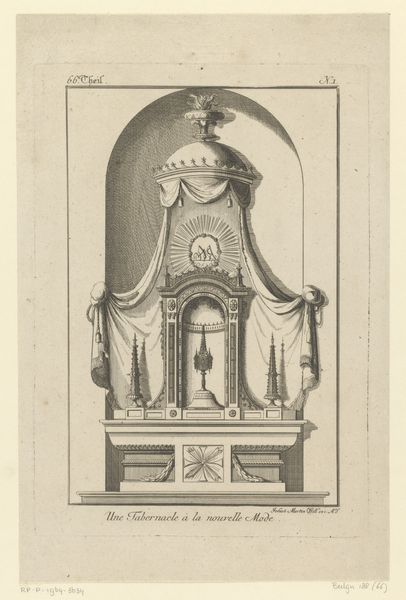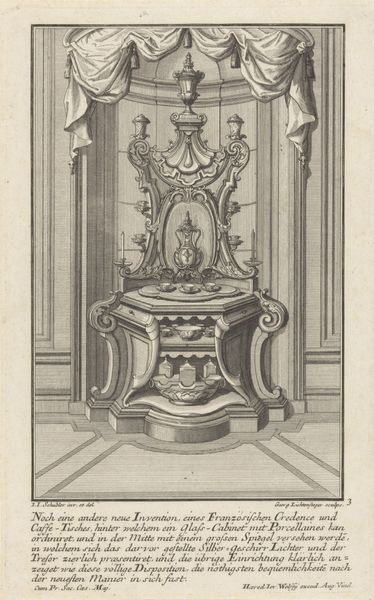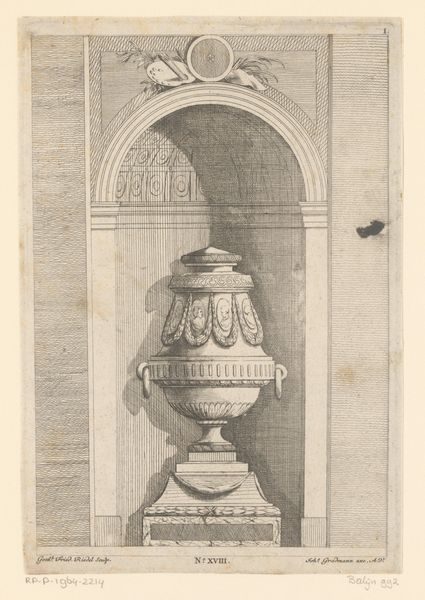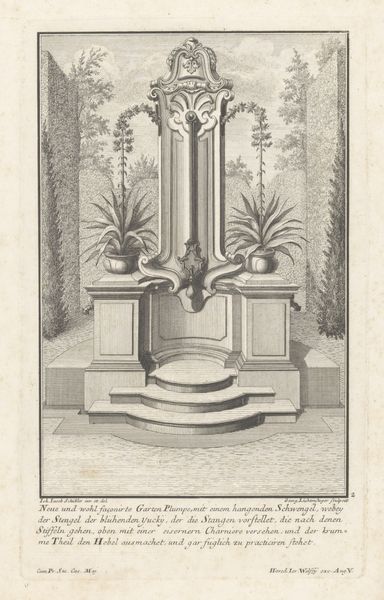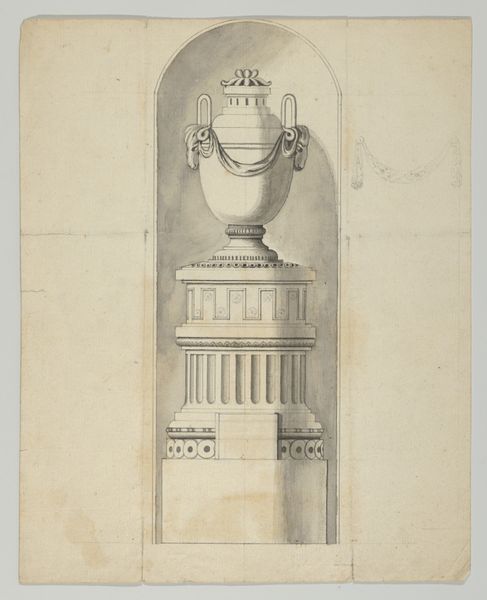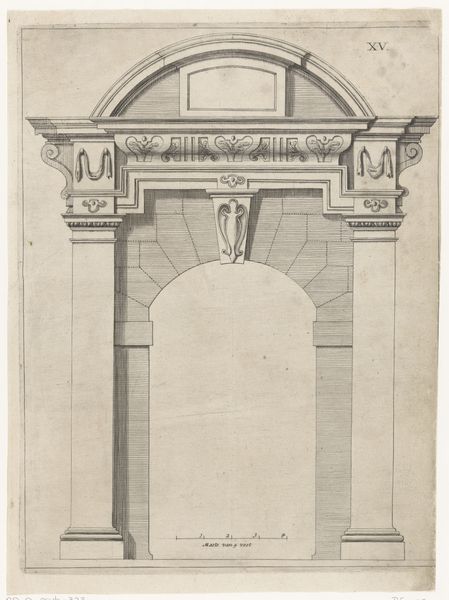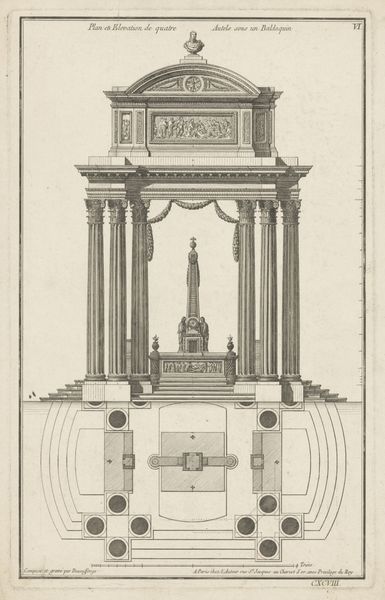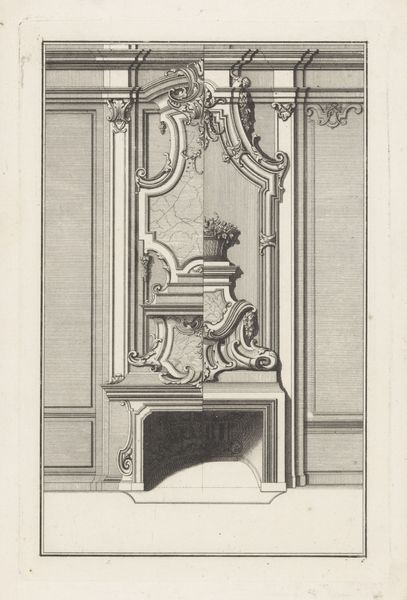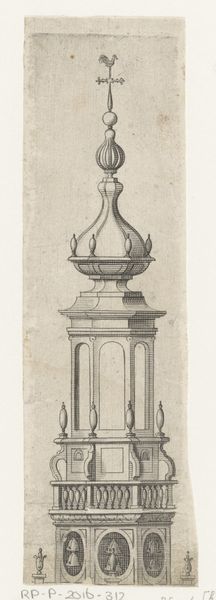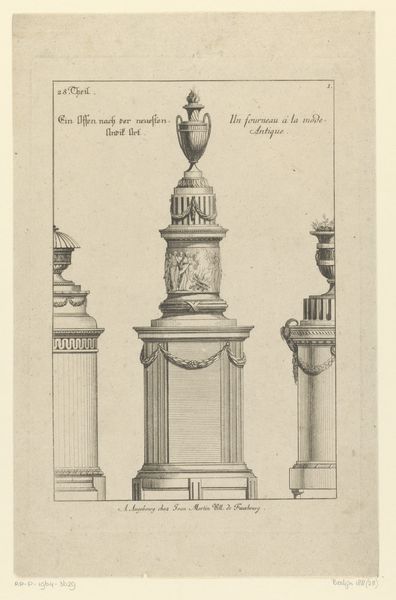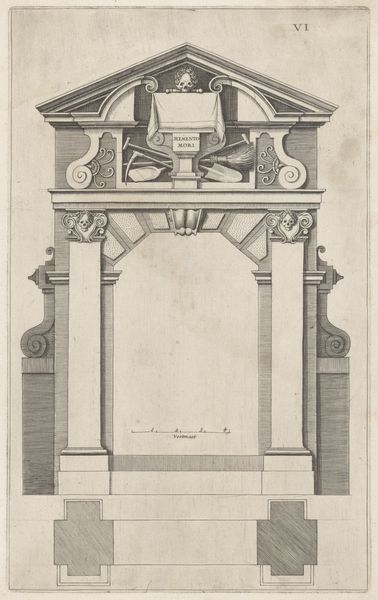
print, engraving
#
neoclacissism
# print
#
old engraving style
#
form
#
historical fashion
#
geometric
#
line
#
history-painting
#
engraving
Dimensions: height 288 mm, width 204 mm
Copyright: Rijks Museum: Open Domain
Curator: Let’s discuss "Tabernacle with lamb and the book with the seven seals", a print housed here at the Rijksmuseum and created sometime between 1737 and 1806 by an anonymous artist. Editor: It strikes me as a study in formality. A lamb surrounded by a radiant halo rests atop what appears to be an altar or shrine. Its symmetry is imposing and clean. Curator: Indeed, the print reflects the Neoclassical art movement with its sharp lines and idealized forms, reminiscent of ancient Greek and Roman art. Note how this aesthetic filters into representations of power and worship. The tabernacle motif connects to faith traditions, and the book with seven seals might allude to apocolyptic narratives within Christianity. How do you read this combination? Editor: Well, looking at its materials, as a print it's part of a system that allows the circulation of ideas, even subversive ones, and perhaps it invites reflections on religion, class, or social order. Consider the process—the etching, the printing, the distribution—each step contributes to the layering of meaning within the piece. Also the very practical function: was this design, or a similar one, used? Did its materials or method influence future designs, trends, fashions? Curator: It prompts us to consider the power dynamics at play in the era that saw its making and circulation. During that time, religious authority intertwined intricately with the economic realities. And I think these crisp lines, that geometric exactitude, further reinforce themes of divine order. I also can't help but note its cultural construction through symbolic interpretation: The lamb, clearly symbolic, juxtaposed with "the new style" hinted at in the lettering could speak to how established doctrine can intersect with a changing societal aesthetic. Editor: Ultimately, this piece pulls us in several different directions. It invites us to question not just what it represents but how those representations took on form, through skill and hard labor. It also demands we trace its potential for influence: how such prints might have helped to produce or circulate specific ideologies and class interests, or maybe have simply suggested "new" styles. Curator: Reflecting on this piece truly enriches our appreciation for the nuanced connections between form and belief in historical contexts. Editor: Right, it makes me think about the interplay of skill and material in creating symbolic forms and styles for belief systems, especially "new" ones.
Comments
No comments
Be the first to comment and join the conversation on the ultimate creative platform.
